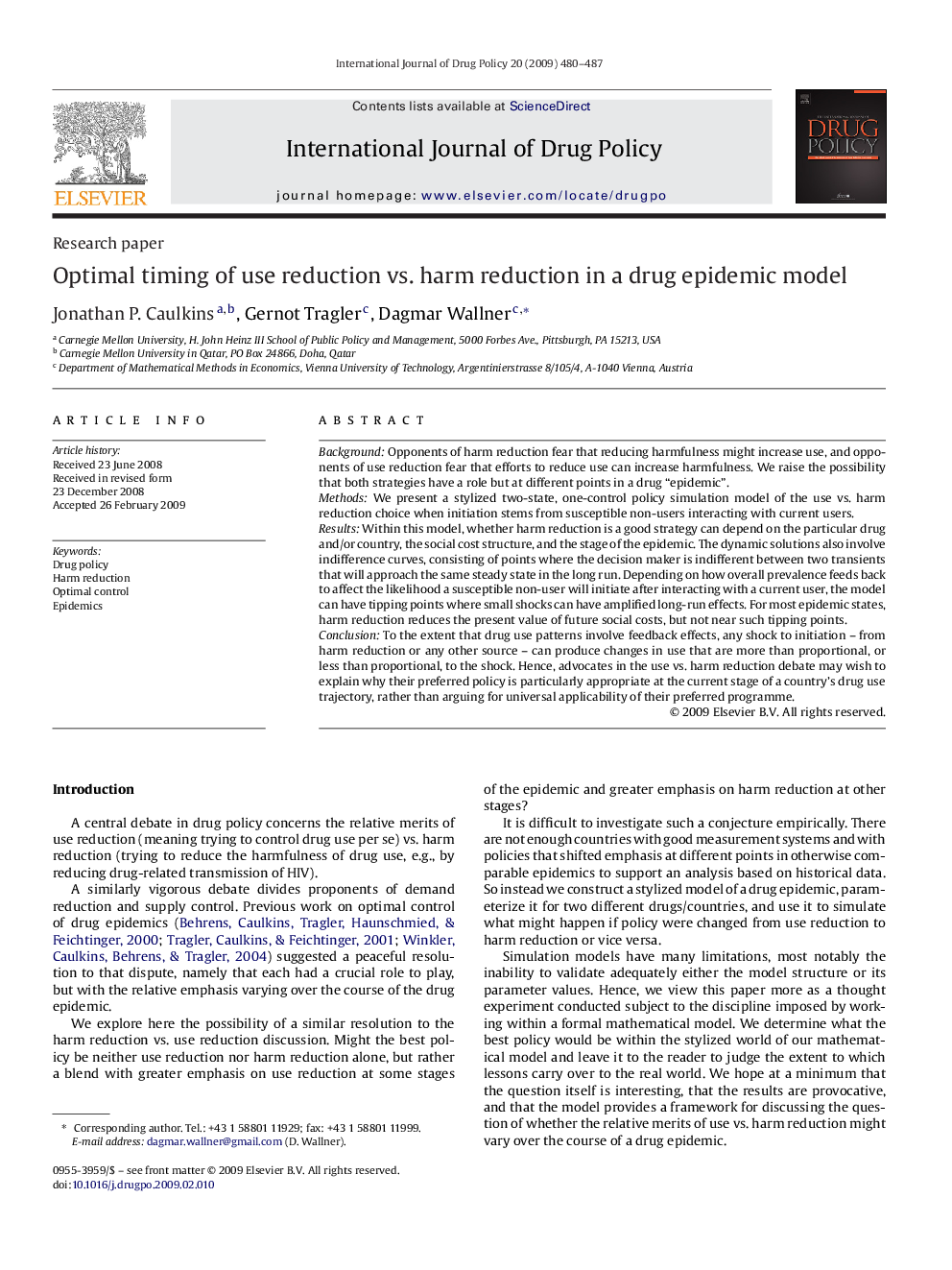| Article ID | Journal | Published Year | Pages | File Type |
|---|---|---|---|---|
| 1075775 | International Journal of Drug Policy | 2009 | 8 Pages |
BackgroundOpponents of harm reduction fear that reducing harmfulness might increase use, and opponents of use reduction fear that efforts to reduce use can increase harmfulness. We raise the possibility that both strategies have a role but at different points in a drug “epidemic”.MethodsWe present a stylized two-state, one-control policy simulation model of the use vs. harm reduction choice when initiation stems from susceptible non-users interacting with current users.ResultsWithin this model, whether harm reduction is a good strategy can depend on the particular drug and/or country, the social cost structure, and the stage of the epidemic. The dynamic solutions also involve indifference curves, consisting of points where the decision maker is indifferent between two transients that will approach the same steady state in the long run. Depending on how overall prevalence feeds back to affect the likelihood a susceptible non-user will initiate after interacting with a current user, the model can have tipping points where small shocks can have amplified long-run effects. For most epidemic states, harm reduction reduces the present value of future social costs, but not near such tipping points.ConclusionTo the extent that drug use patterns involve feedback effects, any shock to initiation – from harm reduction or any other source – can produce changes in use that are more than proportional, or less than proportional, to the shock. Hence, advocates in the use vs. harm reduction debate may wish to explain why their preferred policy is particularly appropriate at the current stage of a country's drug use trajectory, rather than arguing for universal applicability of their preferred programme.
